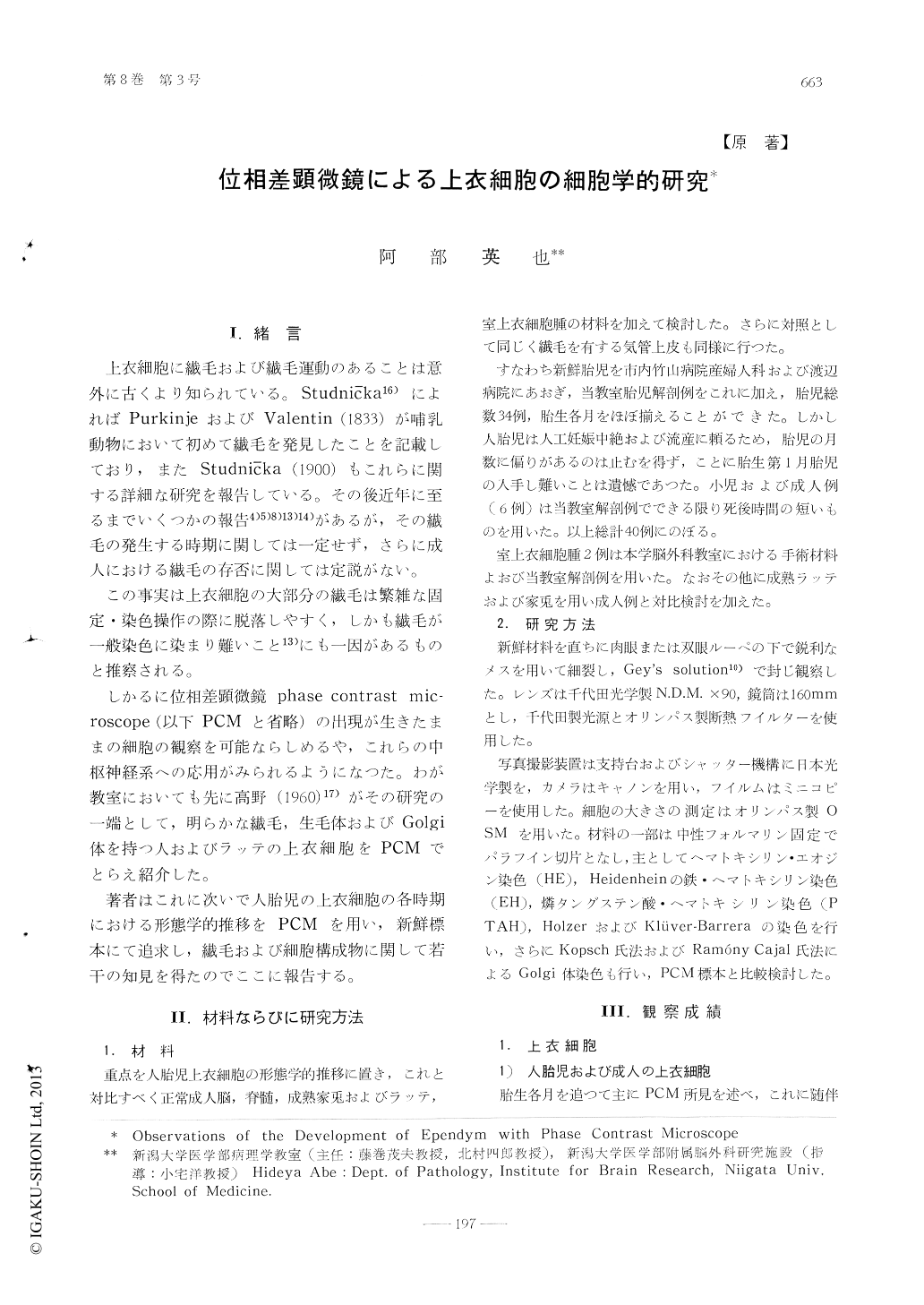Japanese
English
- 有料閲覧
- Abstract 文献概要
- 1ページ目 Look Inside
I.緒言
上衣細胞に繊毛および繊毛運動のあることは意外に古くより知られている。Studnicka16)によればPurkinjeおよびValentin(1833)が哺乳動物において初めて繊毛を発見したことを記載しており,またStudnicka(1900)もこれらに関する詳細な研究を報告している。その後近年に至るまでいくつかの報告4)5)8)13)14)があるが,その繊毛の発生する時期に関しては一定せず,さらに成人における繊毛の存否に関しては定説がない。
この事実は上衣細胞の大部分の繊毛は繁雑な固定・染色操作の際に脱落しやすく,しかも繊毛が一般染色に染まり難いこと13)にも一因があるものと推察される。
To elucidate the development of ependyma,34 brains of human fetuses of various stageswere observed with phase-contrast-microscope,comparing with brains of rats, rabbits, humanchildren and adults. The results obtainedare roughly as following: By the end of the 2nd mo. of human fetallife, the cells lining central canal are jointedwith terminal bars on their free margins.The cilia begin to come out at the 41/2 mo.and grow up to about 12μ at the end of the5th mo., with oppearance of Golgi's apparatus.In the lateral ventricle they begin to developat the 5V, mo. and are about 12μ in the 6thand 7th mo., then decrease to be 8p,and 2~3μ in length (8th, 10th and adult, res-pectively). In human adult, they are shorterin the ventricle than in the central canal (8μ),whereas in mature rats and rabbits they areabout lop long in both sites. The cilial move-ment can be observed in both tites in humanfetuses (not adults), matured rats and rabbits.
In the early stages of fetal life, the ependy-mal cells have a tadpole-or bat-shape, clearcytoplasm and a nucleus with indistinct chro-mation network. Later, they become to takean elongated tadpoleshape, containing cyto-plasmic granules and some chromatin net-work. In adults, they are cubic with shortprocess and indistinct Golgi's appartus.
With regard to ependymoma, the authordiscerns two types of tumor cells: one, withcytoplasmic granules, Golgi's apparatus andchromatin network, is much alike to maturedependymal cells, whereas the other withoutgranules resembles fetal ones.

Copyright © 1964, Igaku-Shoin Ltd. All rights reserved.


